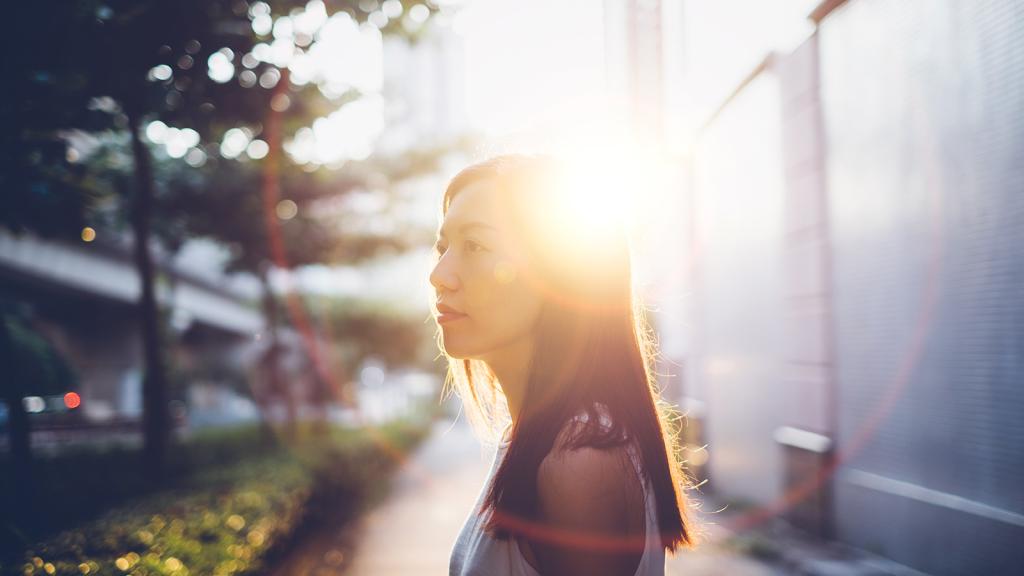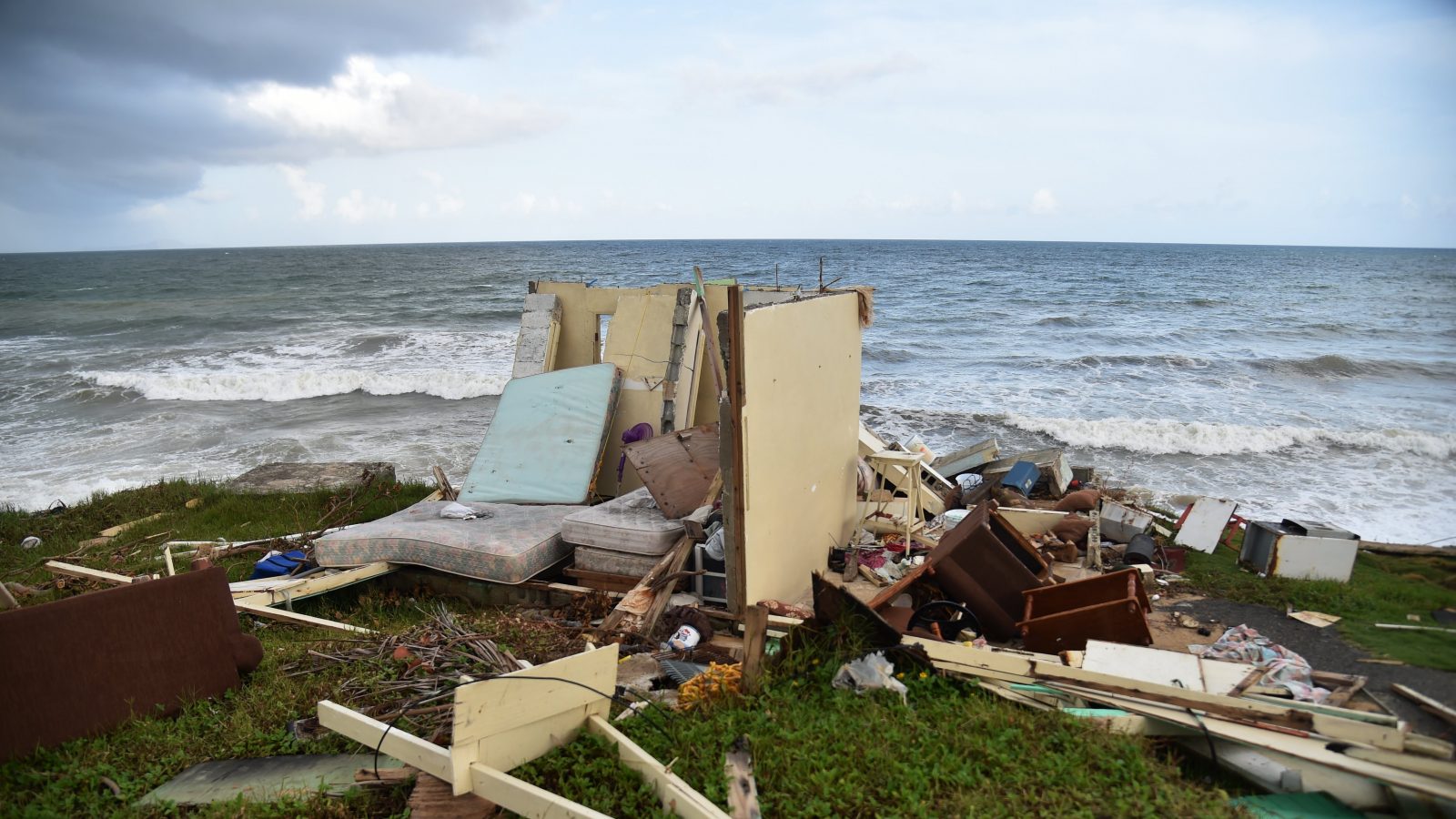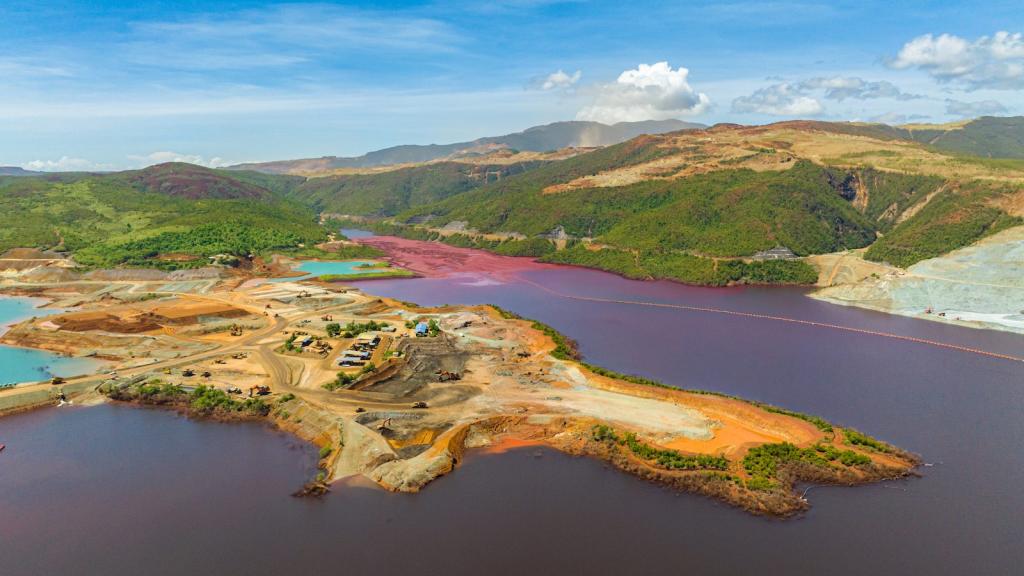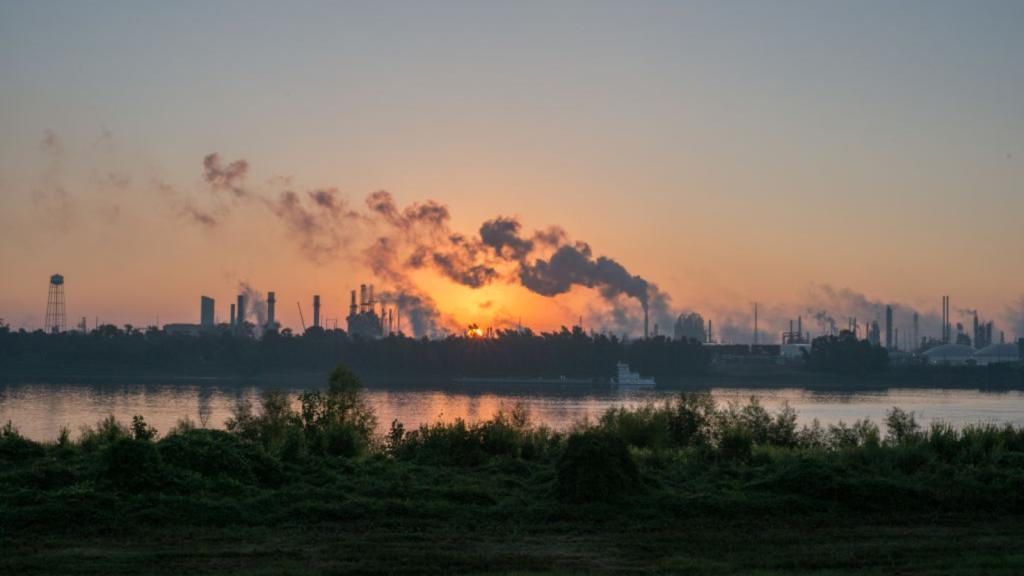This story was originally published by the Guardian and is reproduced here as part of the Climate Desk collaboration.
For the first 36 hours after Hurricane Maria, 5-year-old Keydiel and his mother Shaina were trapped by the toppled trees that blocked the doors to their home in Yabucoa, Puerto Rico.
Eventually, neighbors cleared the sturdy tamarind trees, cutting by hand because there was no electricity. The mother and son emerged to find an island devoured by 155 mph winds and harsh rains.
Their immediate concerns were physical — finding food and water — but bubbling below were anxieties and trauma that would endure for months.
“It was difficult to find himself [Keydiel] in a situation where he didn’t have a way out. It was difficult for me,” Shaina told the Guardian through an interpreter, while sitting at a table outside her son’s classroom. “As a mom, I was very stressed out and I got anxious because I wasn’t able to solve things so quickly. I felt impotent.”
Keydiel’s school sits just below hillside forests that are finally a dense, dark green after Maria twisted them into a tangling mess of trees stripped of leaves and bark. This sign of recovery — one Puerto Ricans craved after their green island turned brown in the storm — is betrayed by house-sized patches of mud from landslides and the remains of pulverized structures.
Down in the valley, where crisp, salt-flecked coastal air drifts in from the Caribbean Sea just over the hills, Keydiel’s school had survived the storm. It was closed for months but eventually provided refuge for children desperate for everything to be like it was before.
Ten months after Maria, Shaina and other Puerto Ricans face a mental health crisis that stems from something frighteningly simple: One powerful hurricane robbed millions of Americans of reliable access to drinkable water, food, medical care, electricity, phones, and internet.
These basic necessities are still luxuries in the hardest-hit parts of the island and took longer than expected to return to the rest of the island, but nowhere is life the same. This disruption to daily life has exacerbated feelings of despair, anxiety, and hopelessness.
Gary Shaye, Save the Children’s interim director in Puerto Rico who also responded to the earthquakes in Haiti and Nepal, said this daily impact distinguishes Maria from other natural disasters because it is a “living emergency.”
“The only other thing like this would be some conflict situations,” Shaye said, alluding to the agency’s work in the Middle East with Syrians “when you see people in a camp and they have a cellphone and every day they don’t know what’s happening to their house, their family, who died — and they live with it every day. Whereas other types of emergencies don’t wipe out an entire island.”
Walking around ‘zombie-eyed’
Mental healthcare was an issue in Puerto Rico well before Maria made landfall on Sept. 20, 2017.
The island’s decade-long recession provoked high unemployment rates and migration that separated families, a distressing mix for Puerto Ricans — especially those underserved by the island’s strained healthcare system.
All these issues were exacerbated by Maria, which robbed every person on the island of their daily routine for weeks, if not months.
Pharmacy closures deprived people of access to prescription antidepressants and antipsychotics. Veterans of the U.S. wars in Iraq, Afghanistan, Vietnam, and Korea reported that the sounds of the storm and scenes of destruction triggered post-traumatic stress disorder symptoms that had been managed.
From November 2017 through January 2018, the island’s suicide hotline, Línea PAS, saw a 246 percent increase in calls from people who said they had attempted suicide compared with the same time a year earlier. There was also an 83 percent jump in people who said they had thought about attempting suicide.
The hurricane left a landscape of flattened homes, broken glass, downed trees, snapped cables languishing in water, and streams of people in shock searching for food, water, or loved ones. Those who were there in the weeks after the storm recall seeing people walking around “zombie-eyed.”
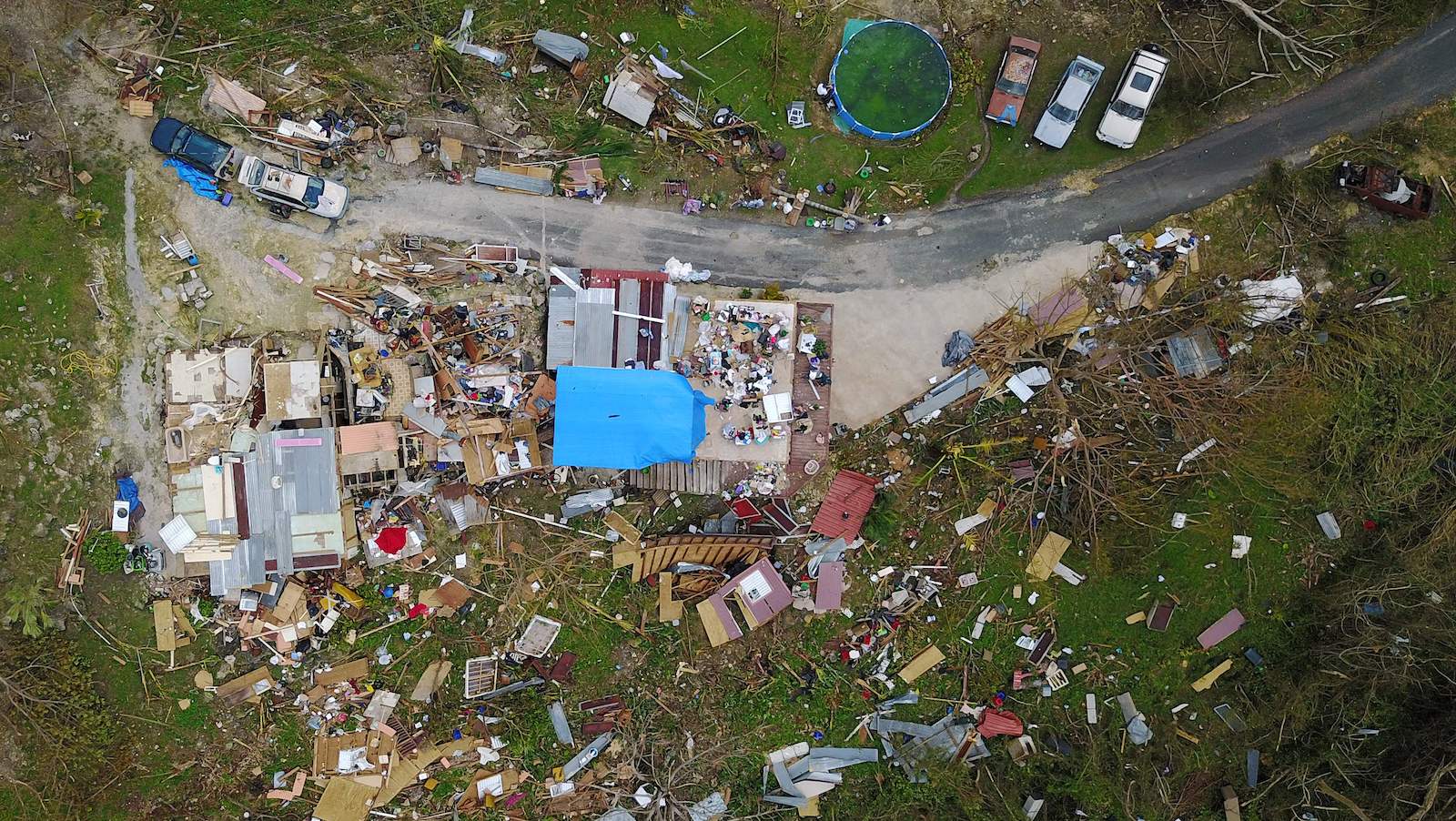
RICARDO ARDUENGO / AFP / Getty Images
The unsafe conditions kept children across the island largely indoors, where they couldn’t do activities that needed light or electricity. Because so many people had moved in with extended families for the hurricane, children removed from their neighborhoods were surrounded by strangers. Streets clogged with debris and crushed glass posed a long-term hazard.
Schools were closed for months, and even when they reopened, classes didn’t immediately begin and not every teacher had returned.
It was a recipe for trauma that can have long-lasting effects, according to Barbara Ammirati, Save the Children’s deputy director of Puerto Rico programs. She has led the implementation of psychosocial programs for children in U.S. disaster zones since Hurricane Katrina in 2005.
Shaina said Keydiel “went a little bit into a crisis” after the hurricane. He had no one to play with until late November, when school returned. Back in class, he was abnormally aggressive.
Shaina, meanwhile, hesitated every morning at 7:30 a.m. when she dropped him off at school, worried about how his food would be prepared because two months after the hurricane, drinkable water was still scarce. Rumors that rats drinking from a local river had later died petrified those who had been cooking and cleaning in the stream.
Hypervigilance is normal for parents after a natural disaster because of the parents’ own stress, explained Ammirati.
By late June, Keydiel and Shaina had shown signs of improvement, something Shaina credits to Save the Children, which deployed child protection programs to 32 municipalities, including Yabucoa.
Keydiel participated in programs that seek to mitigate trauma by improving children’s coping abilities and bringing out their inner resilience. The nonprofit also hosts workshops to train and support caregivers, who are often just as severely affected by the disaster as children.
‘She’d cry every morning, she’d cry every night’
Yabucoa was the site of the hurricane’s first landfall, where at least 1,500 homes were damaged and 60 percent still lacked electricity in May.
At least 19 students said they had considered suicide, according to Yabucoa city council. In May, a man climbed an electricity tower there and threatened to throw himself off in protest at the lack of power. And a preliminary study of 34 families in Yabucoa showed 74 percent of participants would like to receive psychological services.
The Federal Emergency Management Agency (FEMA) awarded $6.7 million to Puerto Rico for its emergency mental health services assistance and training program, which it usually provides for one to two months, but was in place in Puerto Rico until March. FEMA also provided more than $12.6 million for a similar mental health program to run until December that includes services for people who need long-term counseling, children and the elderly.
The U.S. Substance Abuse and Mental Health Services Administration also loosened restrictions on existing block grants, offered technical assistance, and provided materials including 300 disaster kits and 5,000 suicide prevention wallet cards.
But places like Yabucoa are also getting significant support from the island’s mental health professionals and international nonprofits, including Save the Children, who pay regular visits to the area.
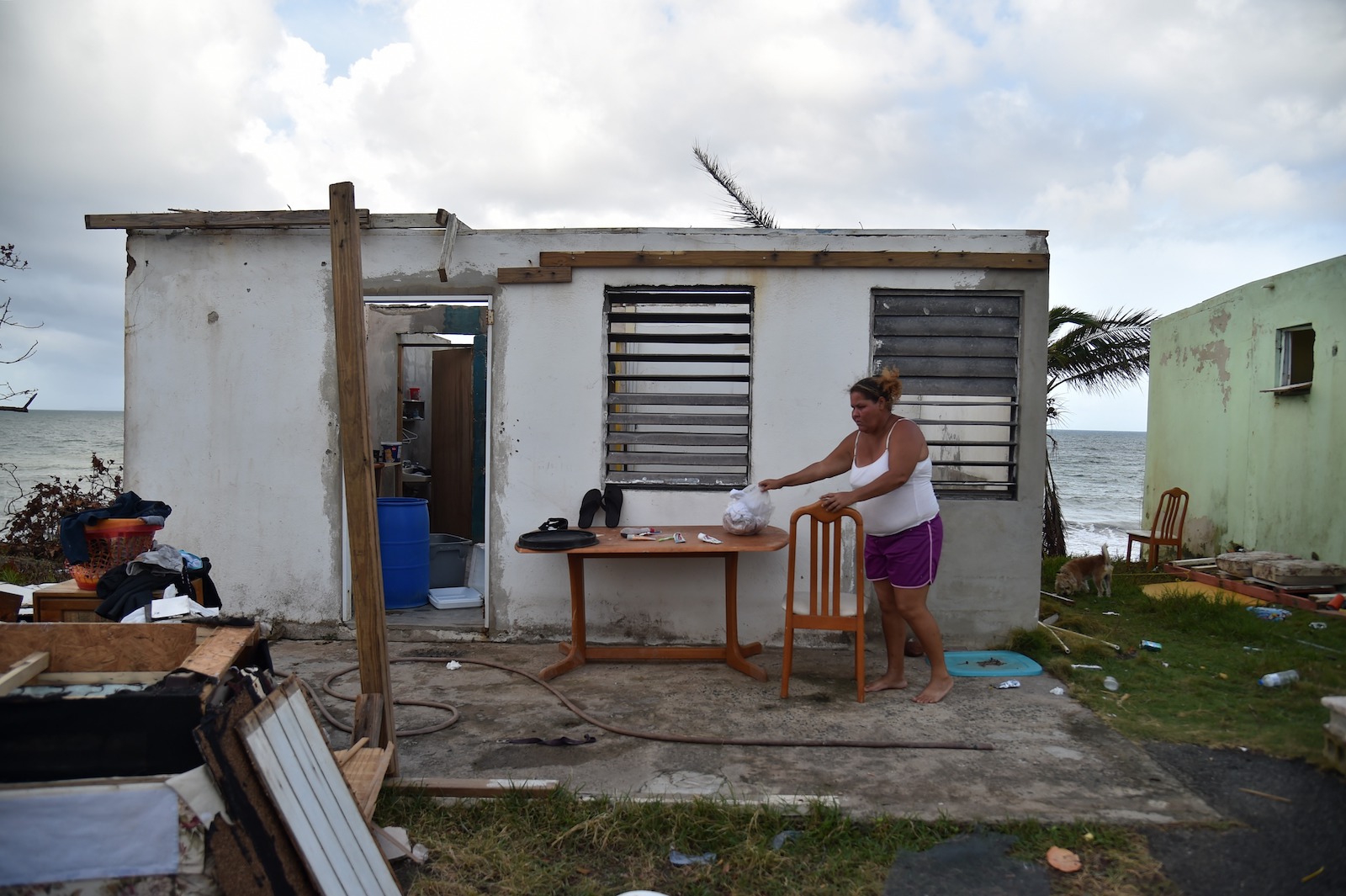
A woman in Yabucoa after Hurricane Maria. HECTOR RETAMAL / AFP / Getty Images
It was a Save the Children course where Alejandra, a cheery 9-year-old, said she and her classmates discussed what they were afraid of and how to help each other if they were mad or upset. “We were all sad it was ending because it was a lot of fun,” she said through an interpreter in an interview at her school.
Alejandra was chatty, and danced around her school’s outdoor hallways after the interview. The warm, thick air warned of an incoming tropical rainstorm that would cause electric outages throughout the afternoon — the new normal across Puerto Rico.
Her parents, Yeliza and Juan, said her bubbly attitude was a dramatic turn from how she was in the winter, when the family fled Puerto Rico for Florida.
More than two months after the hurricane, they did not have electricity and drinkable water was difficult to come by. Alejandra had been a dedicated student who took pride in her good grades, but school was closed through late November.
Juan said in a state of “complete desperation” they left for Florida.
They returned to Puerto Rico less than three weeks later because Alejandra was struggling at her school, which had other newly transported Puerto Rican students but no teachers who could speak Spanish. Alejandra said she didn’t feel safe at school and was very sad because she spent most of her time indoors with her older cousin.
“She’d cry every morning, she’d cry every night,” Yeliza said. “She didn’t want to go to school.”
Juan had found work and the family was living with relatives, but they still couldn’t get used to the new place, so they came back. “Now we’re here, battling it out,” Juan said.
Power returned to their home in April, though Alejandra pointed out that the electricity still goes out “now and then.” Her mother added: “But at least we can watch TV every day,” prompting claps from her young daughter.
Providers need psychological support, too
Ammirati said the existing network of mental health professionals in Puerto Rico was strong, but because the scope of devastation was so enormous, those providers needed psychological support too, like on an airplane when passengers are instructed to put an oxygen mask on themselves before helping children.
At one school in Yabucoa, a Save the Children caregivers workshop for teachers had the entire staff in tears. A course instructor, Tina Tirado, said teachers there told her they despaired at the lack of electricity, were distressed about not having their normal lives back and had a lack of hope about the future.
To address this issue, the island’s existing network of mental health professionals and educators made alliances with local universities, clinicians across the globe, NGOs, and city governments.
New York City’s Department of Health and Mental Hygiene sent clinicians to train nearly 1,000 people, mostly school staff, in psychological first aid. The department’s deputy commissioner, Oxiris Barbot, who is of Puerto Rican descent, said city workers heard “bone-chilling stories about people losing family members to suicide.”
“Teachers having to act on behalf of students to prevent parents from killing themselves in front of their kids,” Barbot said. “Just really traumatic events that even hearing them recounted by individuals months later, you can see how emotionally affected they are by the ongoing devastation of Hurricane Maria.
“This situation has brought into stark relief for me, that in this modern age, in the United States, we have to talk about the basicness of electricity and clean water and essential public health needs of a community,” Barbot said. “I never thought six months after a disaster, I would still have to focus on that.”
A sense of community remains strong
Despite this, Barbot and other mental health professional see signs of hope.
“Part of what we learned in addition to the hunger that there was for the basic skills was also about the resiliency of the human spirit,” Barbot said. “Even though they had gone through this tremendous devastation, they still had a sense of community and connectedness and commitment to their jobs as educators, to their calling as protectors of children to kind of show up for them and create a semblance of normalcy.”
This was on display at a school in Yabucoa for children between 18 months and 14 years. While showing off student-grown watermelon, pepper, and tomato plants and newly cleaned classrooms, Principal Maraida spoke about the army of parents who had helped her rebuild the campus, which was closed to its 150 students for 103 days.
She ignored tables and chairs in a classroom for toddlers and instead told her story while sitting on the classroom floor, which she said “is where everything begins.”
One of the school’s parent helpers, Melissa, had moved her husband, daughter, and niece into her parent’s house ahead of the hurricane because their property was sturdier. It was clearly the right decision, as pictures of her own home after the hurricane show a building that looks like it was picked up and smashed into the hill it was built on. She later found the family’s mattresses down the hill from their home.
Along with losing everything she owns, Melissa’s house had only got electricity back in late June — 290 days after it first went out.
But Maraida said Melissa had done everything possible to help the school, even after giving birth to her now 3-month-old baby. “She’ll slaughter pigs if you want her to,” Maraida said.
Melissa explained that the school was important for her daughter, Sonielys, who requires special education courses. Sonielys, 10, also went through Save the Children programs and was calm when power went out in a classroom during an interview.
She made an eerie, undulating “wooooh” noise to describe what the hurricane sounded like and showed no signs of fear as she recalled nonstop rain and not being allowed to go to school for weeks. “I learned that we’re all the same but some things are different,” Sonielys said through an interpreter.
Maraida was proud as she spoke of the work Melissa and other enthusiastic parents accomplished, but when asked about mental health issues in the community, she crumbled.
“We all have that friction sometimes, because the situation is not simple, it is a little bit complicated,” she said, crying. “I myself have a lot of trouble because I’m in charge. Because I am the leader, when I see that things don’t function I want them to function. I try to think positive but it’s a little bit hard.”
She described working as a contractor, lobbying the island and federal governments for help, while also caring for her daughter as a single mom, and for her father, who is in chemotherapy for cancer. She said: “I am staying here and I’m giving it to the end.”
